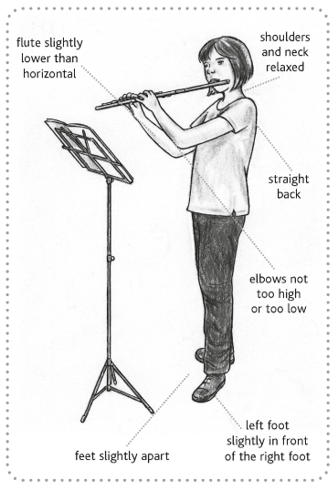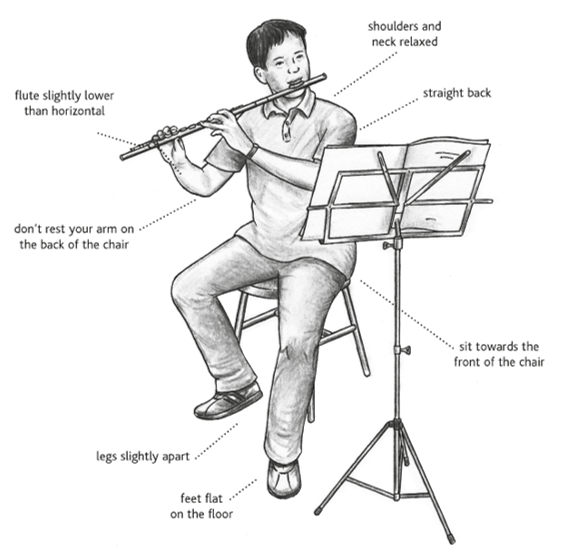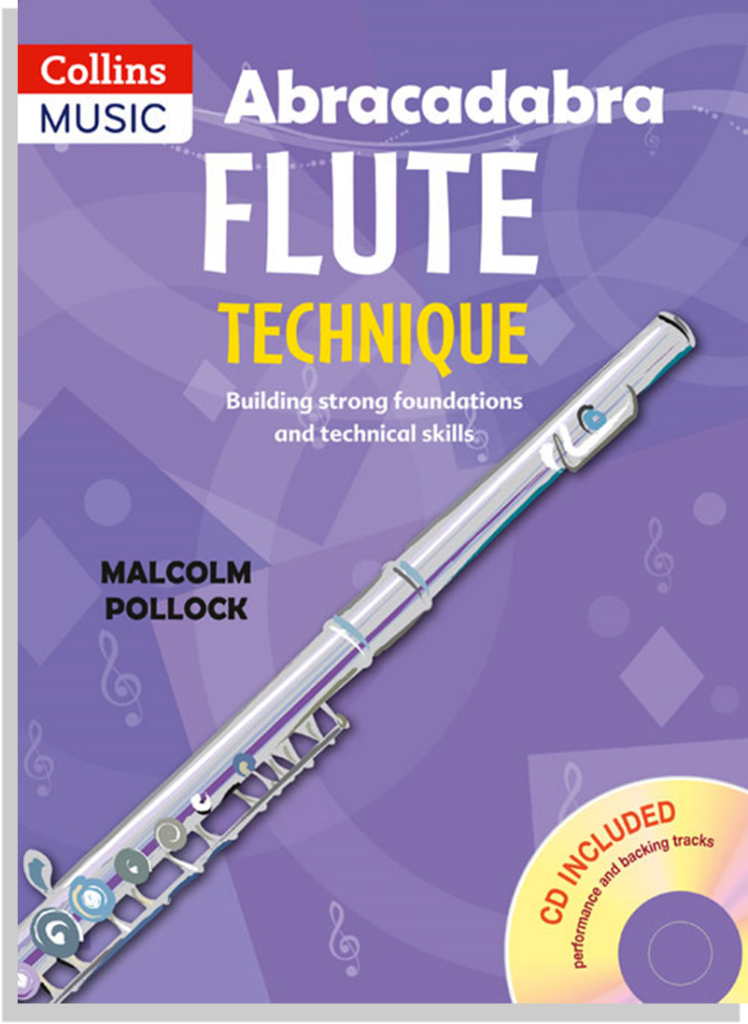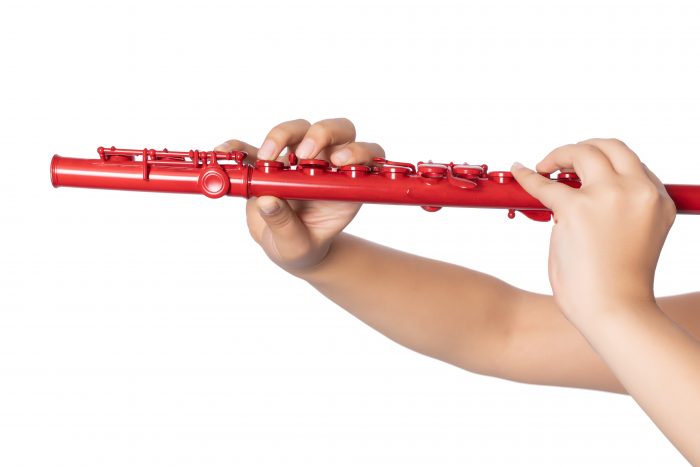With Malcolm Pollock, author of Abracadabra Flute Technique
This is the third of 6 blog posts aimed at teachers of beginner flute players. This series looks at some common challenges faced by pupils and teachers and breaks them down into simple steps to make teaching technique easy even if the flute is not your first instrument, or if you teach a mixed ability group.
Teaching Posture
Teaching good posture from the beginning will reap benefits straight away in reducing tension in the head, neck, shoulders, arms and fingers. I always encourage my pupils to practise standing up if they can, but obviously if they play in an orchestra, band or any other sort of group they will have to be able to play without tension sitting down. Because playing the flute is a rather “lopsided” activity we need to ensure that the centre of gravity is maintained in the right place!
Step 1: standing posture

Standing opposite a wall (your audience!) adjust your music stand so that it is slightly to your left and slightly lower than eye level. Pick up your flute and position your feet slightly apart at a 2 o’clock position in relation to the wall with the left foot slightly in front of the right. Without moving the feet, turn the upper body round to the left to face the wall. Hold the flute slightly lower than horizontal, make sure the shoulders and neck are relaxed, the elbows are not too high or too low and the back is straight.
Step 2: sitting posture

This should replicate the upper body position for the standing posture. The chair should be at 2 o’clock to the wall/ audience, the player should sit towards the front of the chair, the legs should be slightly apart, and the feet should be flat on the floor. Above all, the right arm should NOT rest on the back of the chair!
A good posture ensures that the player can breathe properly and support the sound they make. It helps to reduce tension to a minimum and hence reduce the risk of overuse injuries later on in a player’s career.

There are lots of helpful diagrams, explanations and exercises covering all basic aspects of flute technique in my book: Abracadabra Flute Technique. This is specially designed to act as a companion to Abracadabra Flute but can be used alongside any tutorial method.
Malcolm Pollock has spent a lifetime supporting young musicians through local authority music services, as a teacher, conductor and manager. His last post was the Head of Gloucestershire Music. He was the Chair of the British Flute Society from 2015-2018, and is the author of Abracadabra Flute and Abracadabra Flute Technique.



